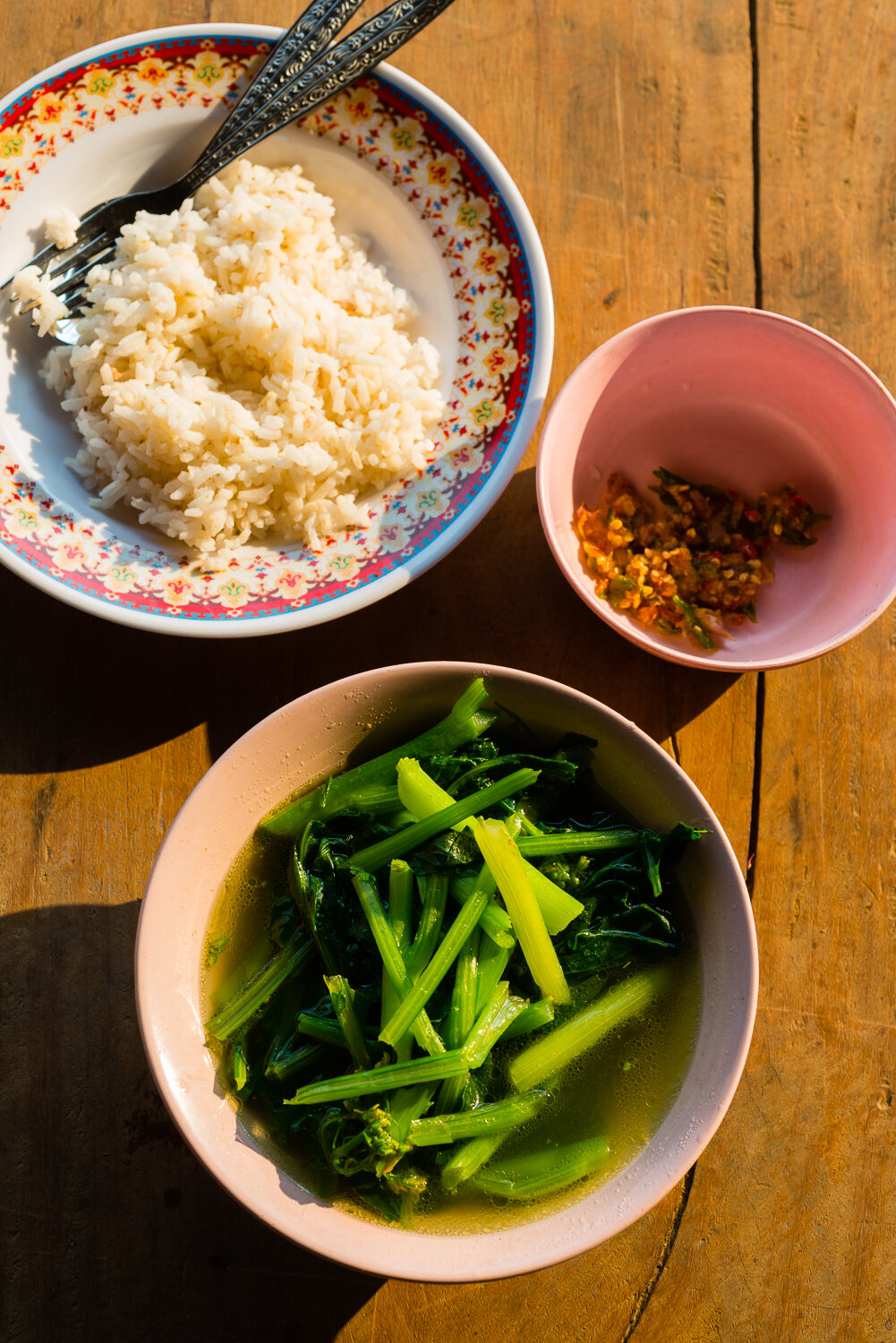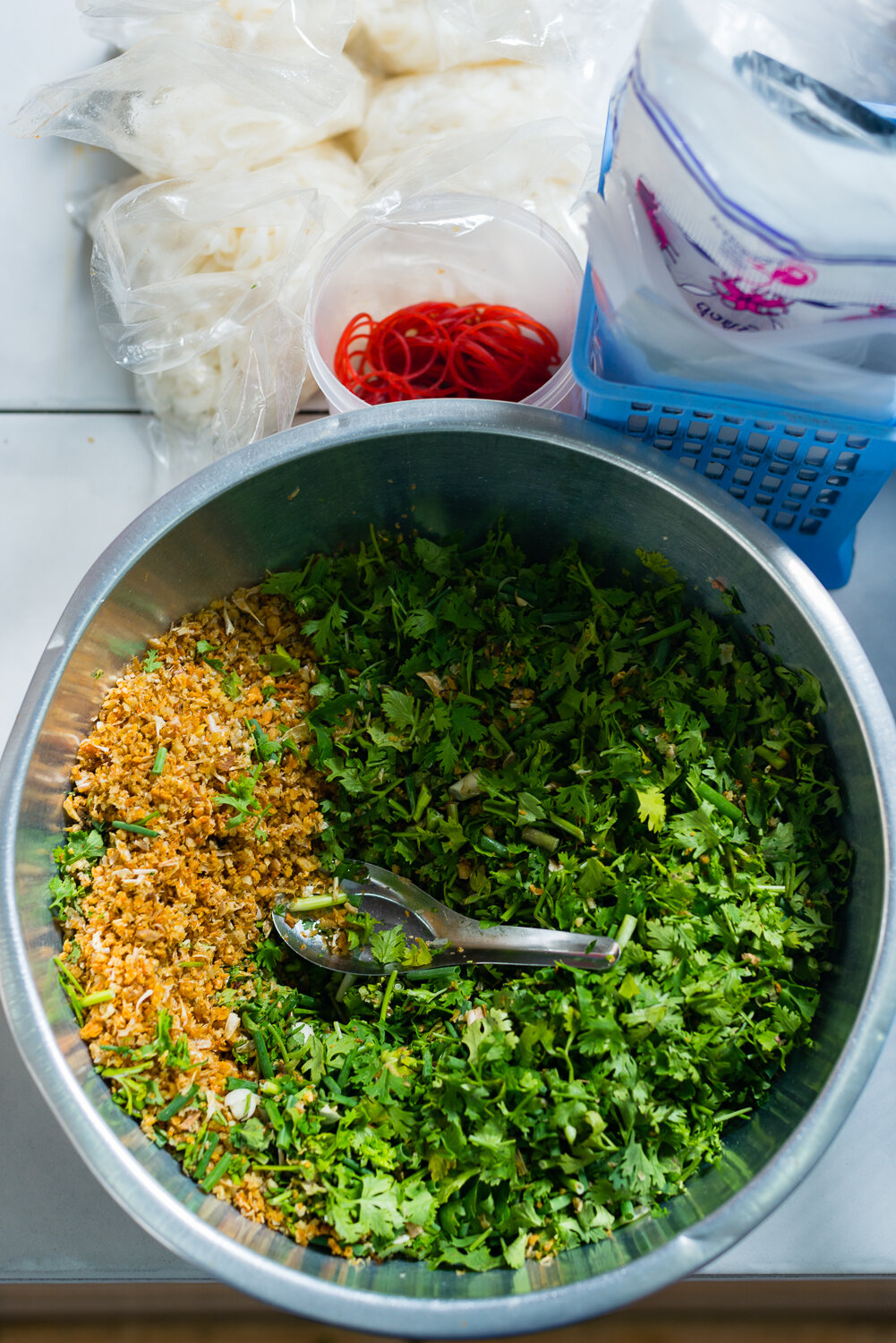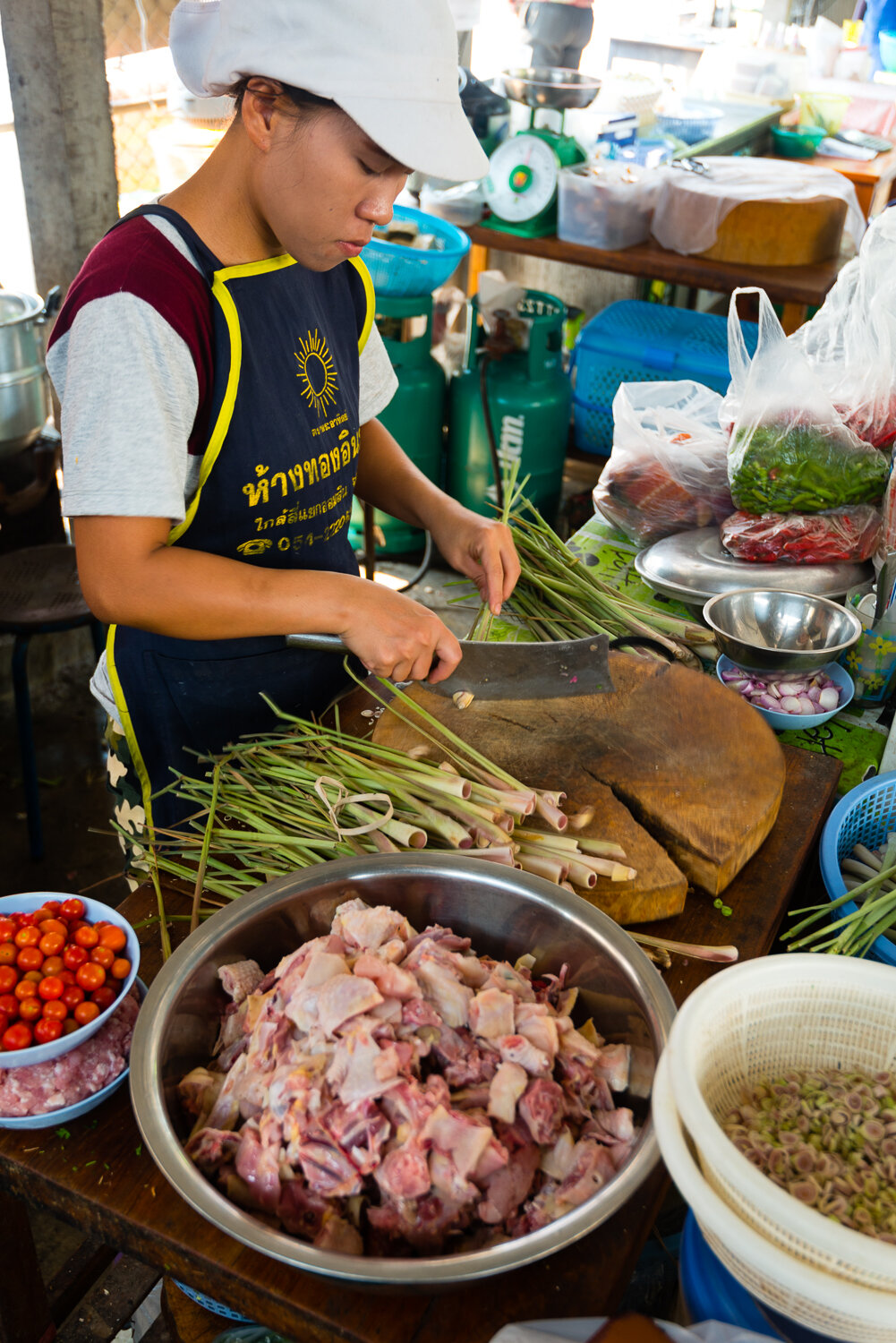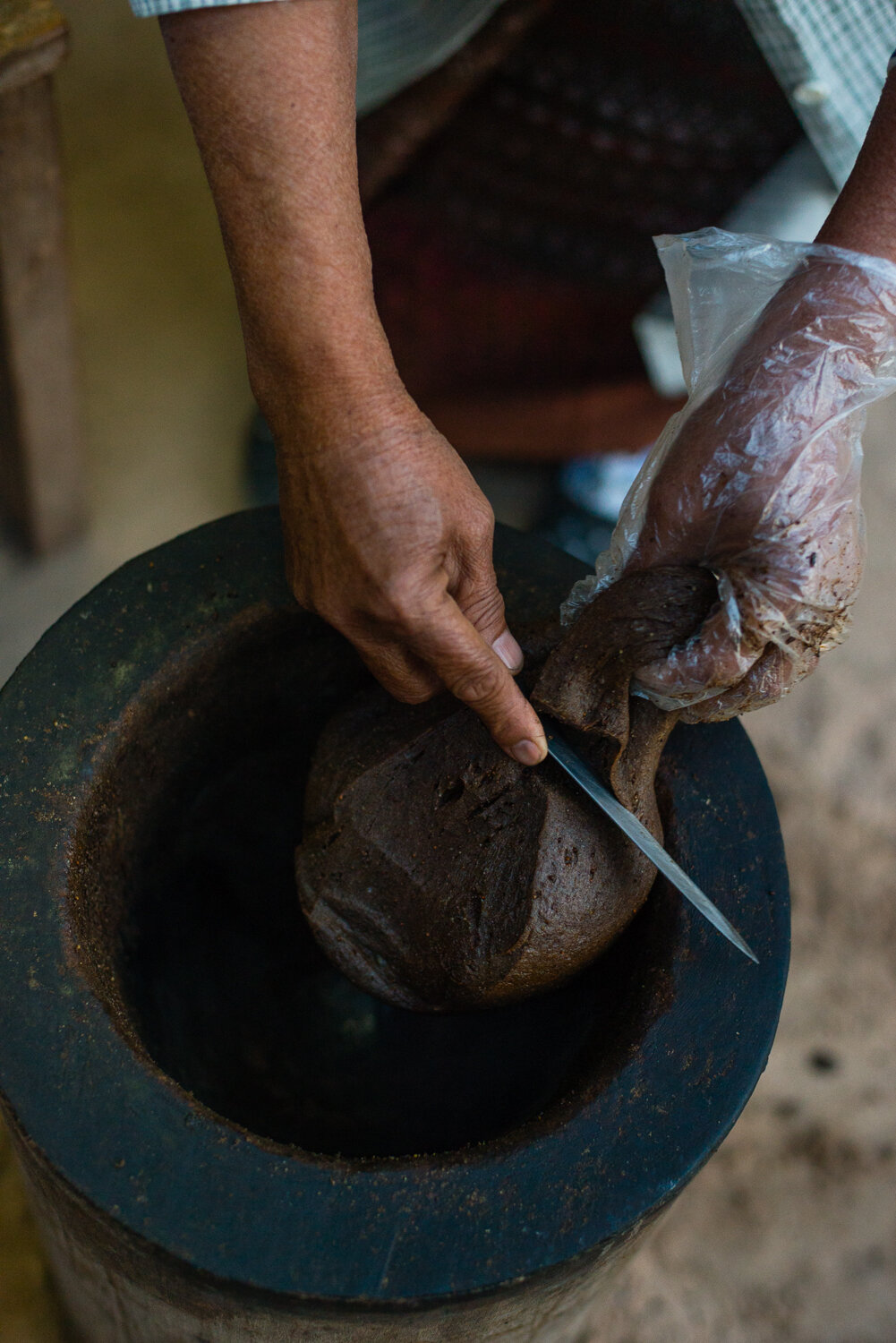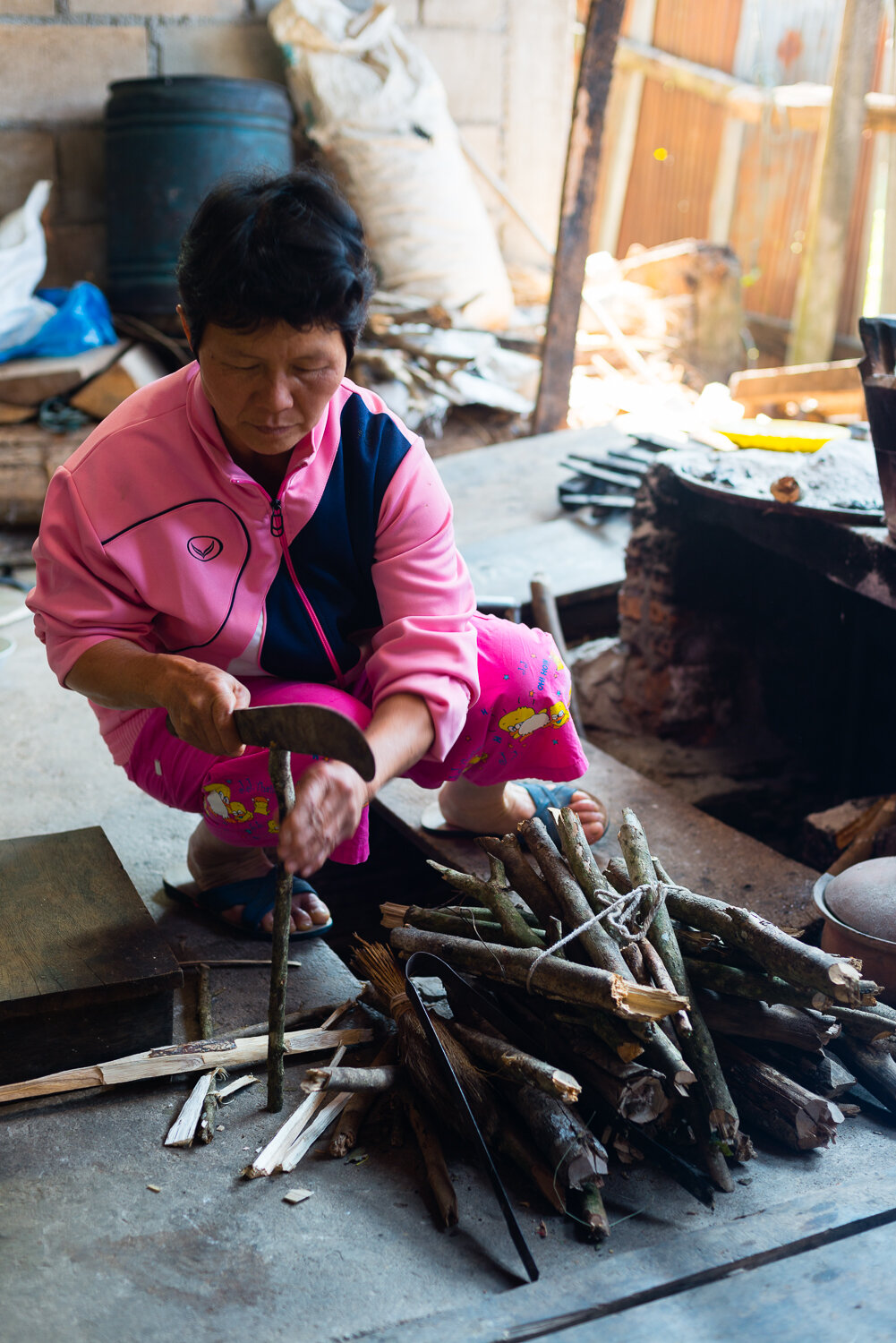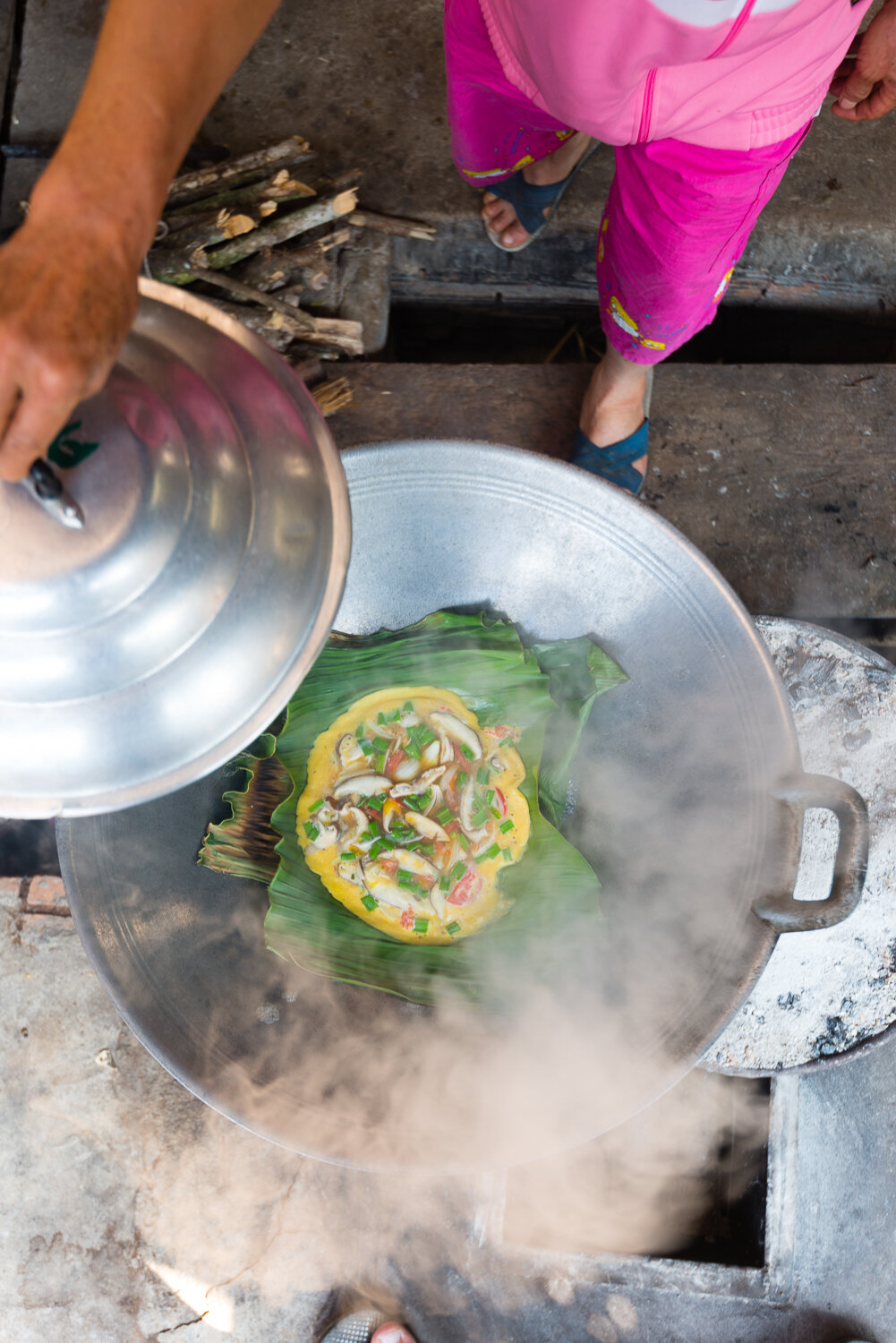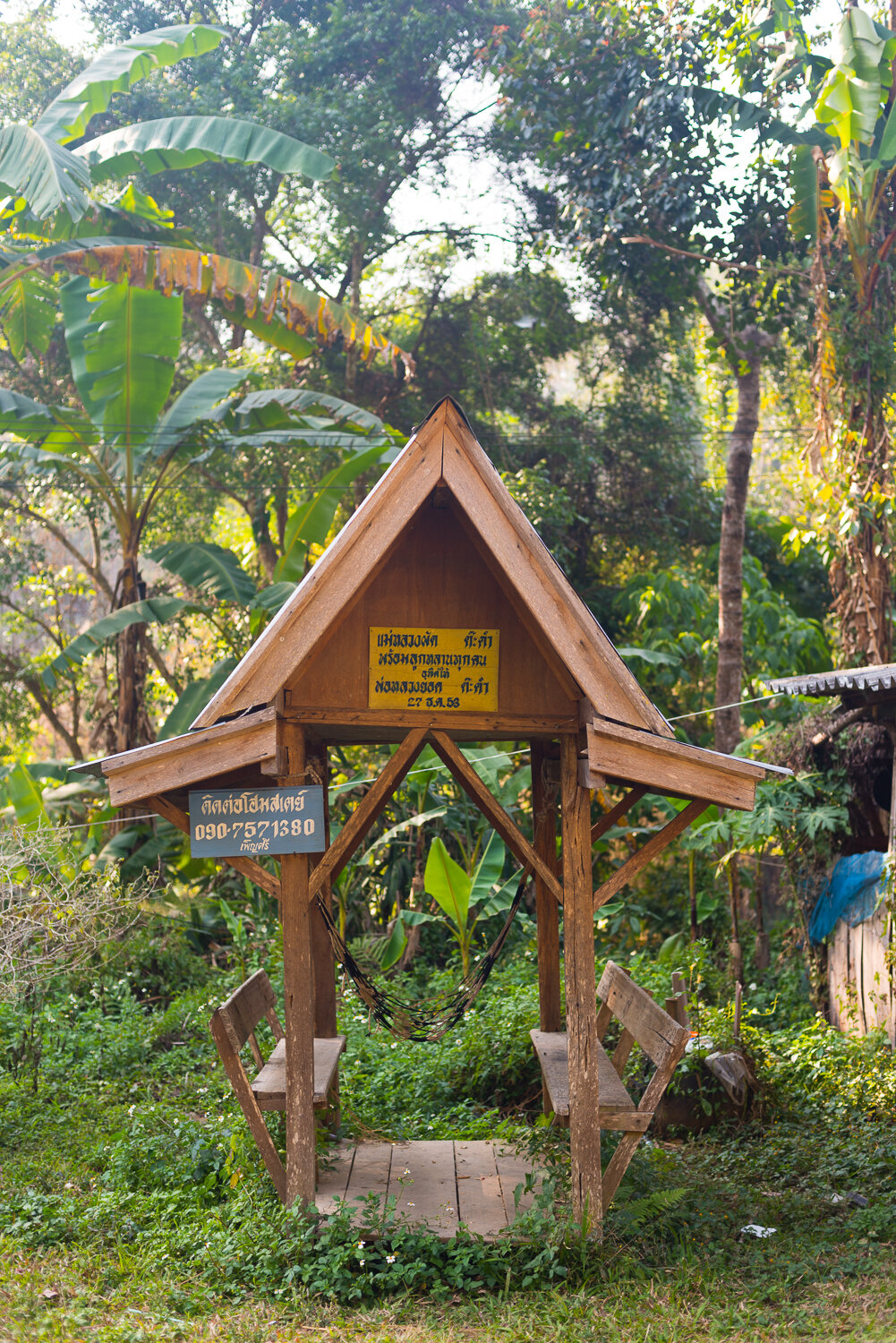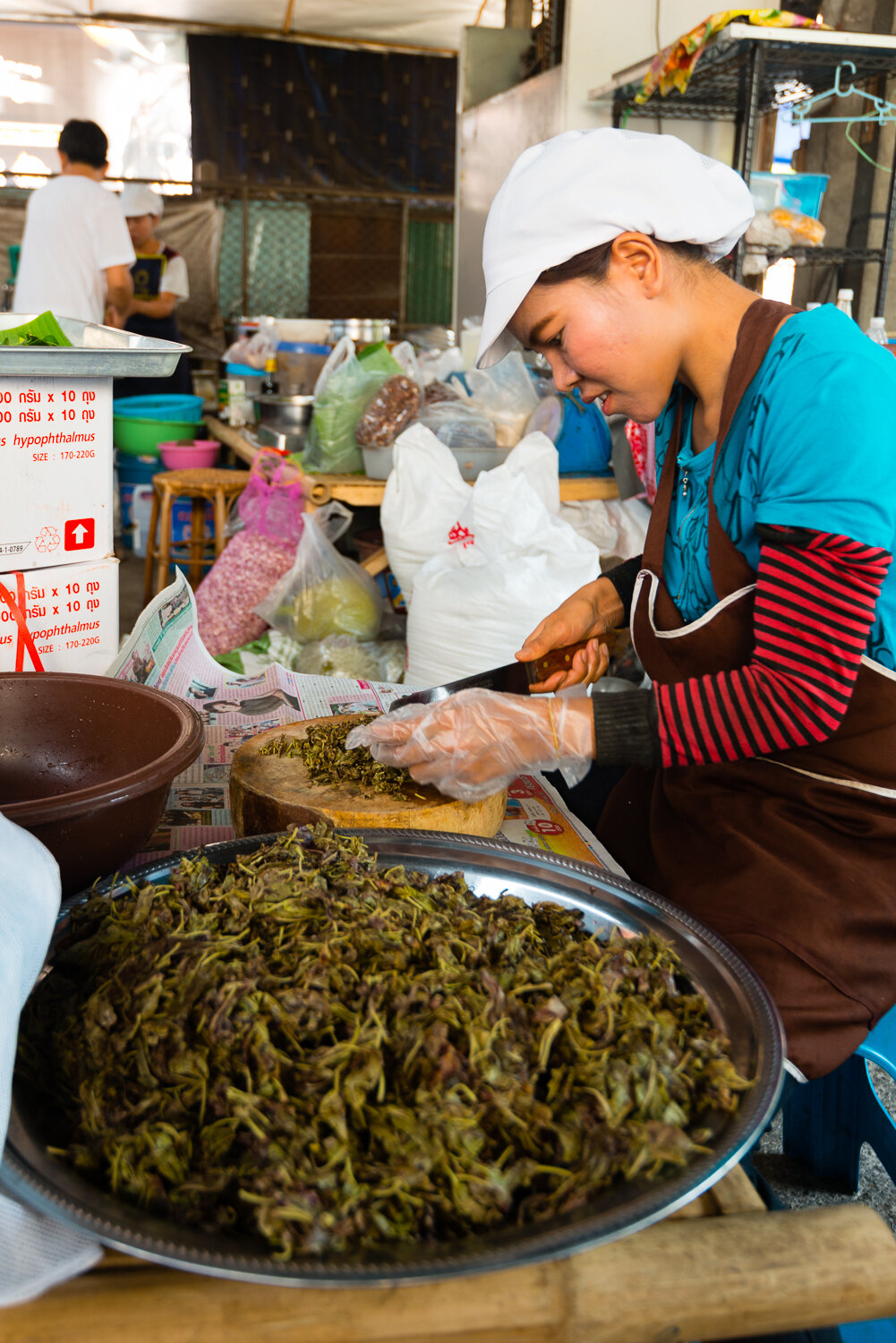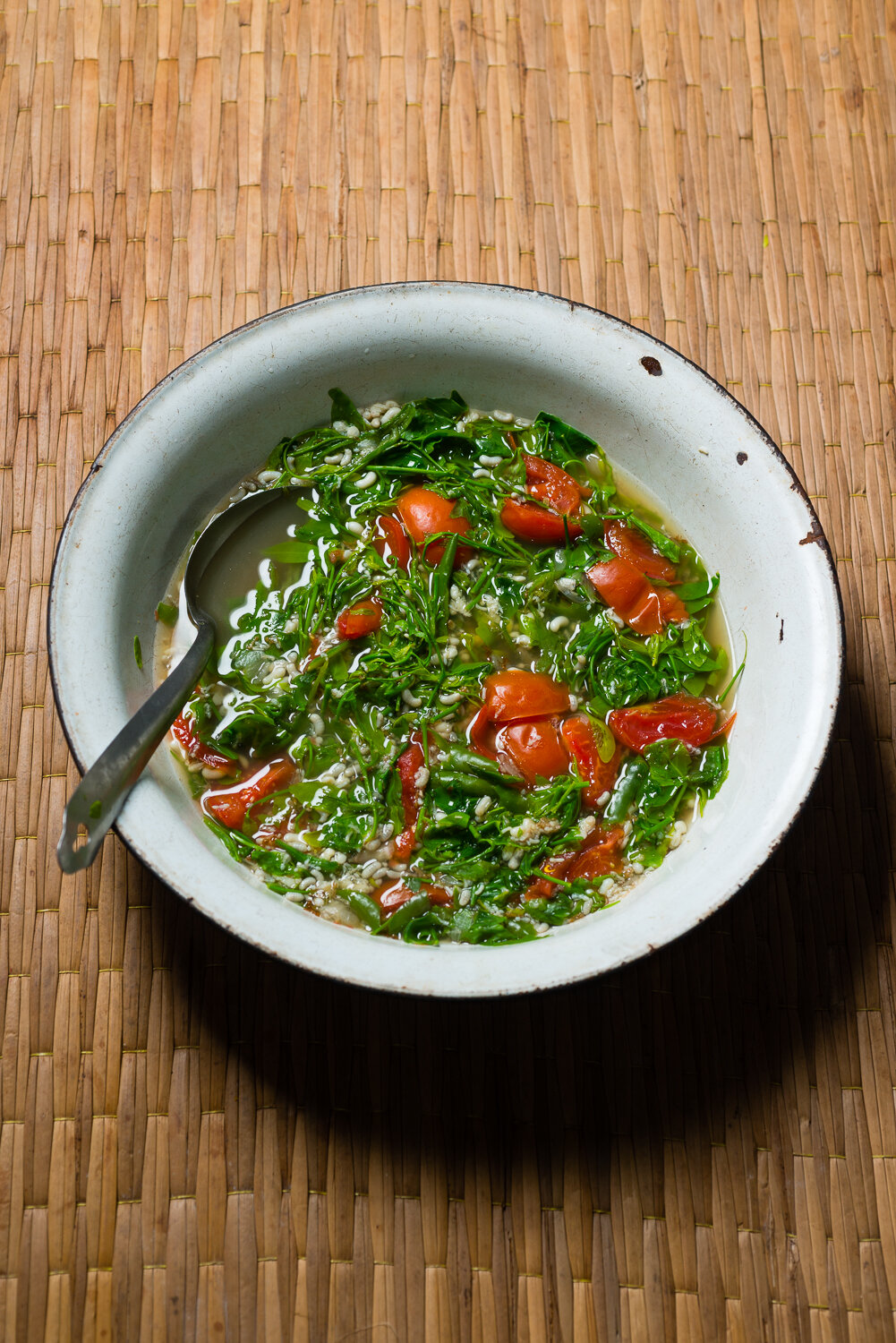Another recipe from Mae Khrua Hua Pa, which the author, Lady Plian, sourced from a prominent Thai royal. The name of this dish is khao buree (ข้าวบุหรี่), which in Thai this means “tobacco rice” or “cigarette rice,” although this is almost certainly the Thai mangling of the word “biryani.” The recipe’s source, Prince Damrong, was a famous Thai historian (among other things), and although Lady Plian doesn’t tell us from where he sourced the recipe, Thailand has a long history of trade with the Middle East and South Asia, and one Thai-Persian family in particular had a huge amount of influence on the current royal line.
The dish is something of a stripped-down biryani, lacking what is nowadays pretty much the defining ingredient of Thai-style biryani, turmeric. Another unusual element is the fact that the spices aren’t ground before being added to the rice. But toasting them in butter makes them easy (and actually kind of pleasant) to crunch through, and results in a really fragrant dish.
หุงข้าวบุหรี่ต้น
(อย่างพระเจ้าน้องยาเธอ กรมหลวงดำรงราชานุภาพ)
เครื่องปรุง - ข้าวประมาณครึ่งทะนาน เนยฝรั่งอย่างดี ๑ ช้อนโต๊ะ นมสด ๒ กระป๋อง พริกไทย ลูกผักชี ยี่หร่า กระวาน กานพลู เกลือ สิ่งละ ๑ หยิบมือ ใบกระวาน ๒ - ๓ ใบ ไก่ ๑ ตัว
วิธีทำ - เอาข้าวซาวน้ำให้หมดละอองสะอาดดีแล้ว เอาหม้อตั้ง เอาเนยตักเทลงในหม้อพอร้อนแล้วจึงเอาเครื่องเทศเหล่านั้นเทลงไป ผัดจนมีกลิ่นหอม แล้วจึงเอาข้าวที่ชาวไว้เทลงผัดพอทั่ว เอานมเทลงสักกระป๋องครึ่ง น้ำร้อนรินลงพอสมควร เติมลงพอท่วมข้าวขึ้นมาเหนือองคุลี ๑ หุงด้วยเตาน้ำมันปิโตรเลียม พอข้าวนั้นเดือดคนเข้าด้วยกันดีแล้ว ปิดฝาหม้อจนข้าวนั้นเดือดอีก จนเหงื่อตกจากฝาหม้อก็รู้ว่าน้ำแห้ง เปิดหม้อขึ้นคนยงให้ทั่วกัน เอาเนื้อไก่ที่ต้มฉีกไว้คนเคล้าเข้าด้วยกัน ปิดฝาหม้อหมุนราไฟให้อ่อนลงหน่อยจนข้าวนั้นสุกดี ยกไปให้รับประทานร้อนๆ
หมายเหตุ เจ้าของตำรานี้ได้เห็นพระองค์ท่านทรงหุงเอง จึงได้สังเกตไว้แต่จะคลาดเคลื่อนบ้างอย่างไรไม่แน่ได้ การต้นนี้หุงข้าวนี้ ทรงชำนาญเช่นการอื่น ๆ เป็นอย่างเอกจึงได้ลงตำราไว้
Hung Khao Buree Tom/Biryani
(In the style of Prince Damrong Rajanubhab)
Ingredients: 2 cups rice; 1 tablespoon good quality foreign butter; ½ cup tinned milk; ½ teaspoon black peppercorns; ½ teaspoon coriander seeds; ½ teaspoon cumin seeds; 8 Siam cardamom seeds; 8 cloves; 1 teaspoon salt; 4 bay leaves [actually the leaves of Siam cardamom]; 500g chicken [I used boneless thighs, which I poached and shredded ahead of time; retain 2 cups of the poaching liquid/broth]
Directions
Rise the rice. In a pot over a flame, add butter and dried spices, and fry until the spices are fragrant [and until they begin to pop, about 1 minute]. Add rice [that has been rinsed and strained], fry until coated in the butter/spice mixture. [Increase heat] add the milk and enough hot water to cover the rice [I used the 2 cups of broth mentioned above, supplemented with about 1 teaspoon of salt]. When the rice reaches a boil, stir the rice, put the lid on the pot, bring to the boil until liquid drips from the lid of the pot [I let it boil, with the lid on, for maybe 1 minute]. Open the pot, add the shredded chicken and stir to combine. Return the lid, reduce heat and simmer until the rice is cooked [I let it simmer at the lowest heat possible for exactly 20 minutes]. Remove from heat and serve while still hot [I let the rice rest for 10 minutes before opening the lid].
Note: I witnessed the prince cook this dish myself, but some elements may be incorrect. As in other things, the prince was talented at cooking rice this way, so I decided to record it.







































